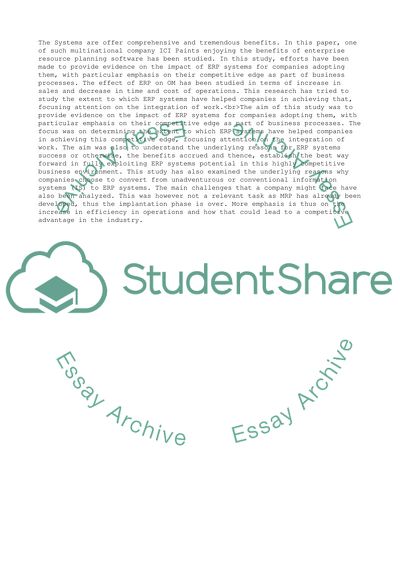Cite this document
(The Enterprise Resource Planning Software on ICI Paints Research Paper, n.d.)
The Enterprise Resource Planning Software on ICI Paints Research Paper. Retrieved from https://studentshare.org/business/1729013-strategic-business-it
The Enterprise Resource Planning Software on ICI Paints Research Paper. Retrieved from https://studentshare.org/business/1729013-strategic-business-it
(The Enterprise Resource Planning Software on ICI Paints Research Paper)
The Enterprise Resource Planning Software on ICI Paints Research Paper. https://studentshare.org/business/1729013-strategic-business-it.
The Enterprise Resource Planning Software on ICI Paints Research Paper. https://studentshare.org/business/1729013-strategic-business-it.
“The Enterprise Resource Planning Software on ICI Paints Research Paper”, n.d. https://studentshare.org/business/1729013-strategic-business-it.


